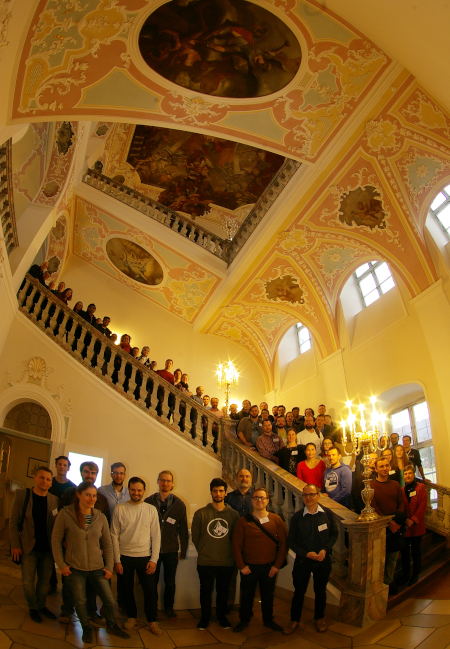About TRR 80
From Electronic Correlations to Functionality
The collaborative research center TRR 80 connects fundamental research on emergent new materials properties driven by strong electronic correlations with the focussed exploration for possible new functionalities in technological devices. At the heart of the materials properties of interest are the strong interplay of charge, spin, orbital, and lattice degrees of freedom, leading to a multitude of complex new phases on different length and time-scales with fascinating electronic properties as well as novel generic excitations. Systematic determination of large susceptibilities to applied fields, perturbations and defects yield complex phase diagrams, which represent a major avenue towards tailored functionalities that may be exploited in designed composite-systems. Research in TRR 80 focusses in particular on novel phenomena in d- and f-electron materials.
Since the start of the Transregio in 2010 the successful development of experimental and theoretical tools to tackle correlated electron systems provided a basis for shaping and advancing this mission in the second and upcoming third funding period. These activities are organized in terms of three research areas comprising the synthesis and characterization of correlated quantum matter with non-trivial topological properties (research area E), the investigation of their emergent excitations utilizing a variety of dynamical methods (research area F) and utilization of reduced dimensions and interfaces for functionalization (research area G). Within the third funding period of the Transregio, the most interesting and promising avenues to realize and implement novel functionalities will be addressed by combined experimental and theoretical efforts across the different research areas E, F, and G. These arise, in particular, from the interplay of electronic correlations and non-trivial topological winding in real and reciprocal space, driven by large spin-orbit coupling, and from electronic reconstructions in thin films, heterostructures, surfaces and interfaces.
The research program presented in the following exploits the very broad spectrum of experimental and theoretical techniques available at the participating institutions. In addition to the University of Augsburg and the Technische Universität München, with its high-intensity neutron source Heinz Maier-Leibnitz, research groups from the University of Duisburg-Essen, the Walther Meissner Institute for Low Temperature Research of the Bavarian Academy of Sciences (München), the Max Planck Institute for Solid State Research (Stuttgart), and the École Polytechnique Fédérale de Lausanne will jointly tackle a broad range of challenges in the description and manipulation of correlated electron materials.
As a unique feature, the consortium includes an unusually broad range of advanced methods to achieve its goals. High-quality single crystalline bulk as well as thin film and heterostructure samples across different material classes will be synthesized and characterized. The materials prepared will be investigated by a large variety of diffractive and spectroscopic methods, and the results modeled in terms of material-specific density-functional theory as combined with powerful techniques based on dynamical mean-field theory. The expertise of the principal investigators involved includes the theoretical treatment of many-body localization and spectroscopic studies of the impact of disorder on correlated electronic structures - representing one of the most outstanding problems of 21st century physics. Taken together, the symbiosis of all the available methods and techniques for gaining a deep understanding of the fundamental properties of bulk materials and highly sophisticated, tailored heterostructures will allow harvesting novel functionalities that originate in strong electronic correlations.


